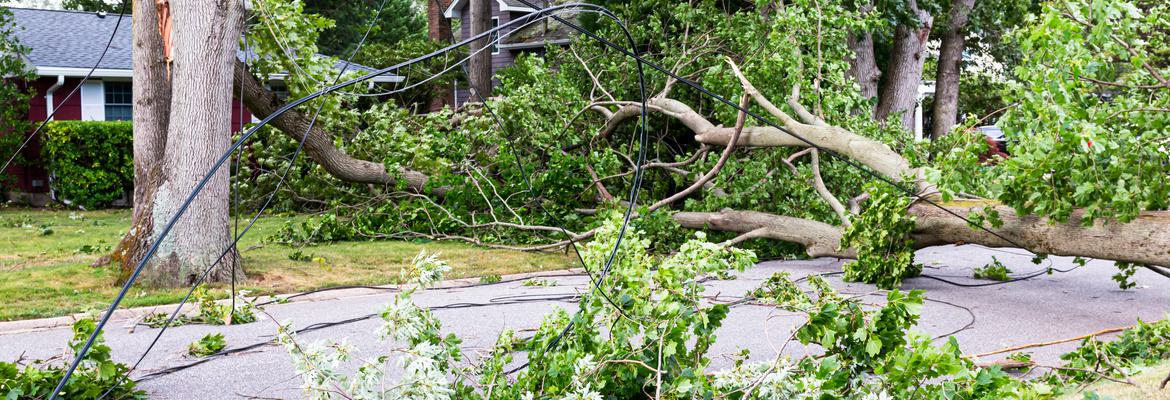Christian Denney, Emergency Response Coordinator, Senior Debris Specialist, Witt O’Brien’s
Disasters create debris, and state and local governments are invariably saddled with the costly clean-up. Under normal conditions, debris removal is resource intensive – often the largest disaster response/recovery expenditure a local government will incur. Adapting operations to address COVID-19 containment can put increased strain on both budgets and human resources. Failing to do so can cause project delays, staffing shortages, prolonged economic disruption, and severe health risks to an already potentially hazardous environment.
It stands to reason that local governments should update their debris removal plans or require their third-party contactors to establish operational guidelines and directives for debris monitoring operations in a COVID-19 environment. However, few jurisdictions have been proactive in taking this necessary step. Since debris removal is event-driven and infrequent, it often gets lower priority than other more urgent community needs. As such, the prevailing mindset has been to adhere to standard operating procedures.
Below are the biggest risks COVID-19 poses to disaster recovery. Local governments can minimize these risks by putting COVID-19 containment measures into their debris removal plans now.
Disrupted recovery efforts - Debris removal operations require substantial labor, often in the proximity of others. Not having COVID-19 containment measures in place can lead to a spike in infections and illness within the operation, which reduces the number of workers available to perform removal tasks and delays project completion. If debris removal is performed by contractors, replacing sick workers will require additional hiring that also can lead to delays, as well as additional costs.
Another reason to be proactive in adapting COVID-19 containment to debris removal plans is ensuring you have sufficient personal protective equipment (PPE). Demand for PPE remains high and local governments and standby contactors/consultants that have not adequately stocked their PPE inventories for disaster response may find themselves waiting weeks-to-months to get critically needed equipment and materials.
Broader workforce disruption - COVID-19 impact within the monitoring and removal teams can cascade throughout the local government organization – especially if a jurisdiction staffs removal activity from internal departments such as emergency management, fire, sanitation, and public works. Not only will those workers be out of commission, they can spread the virus within their departments, further depleting staff resources to manage essential government services.
Potential risk from for outside debris removal teams that do not follow your state/local COVID protocols. Out-of-state contractors hired by agencies like FEMA and The Army Corps (USACE) may be working in the area and not know the local COVID-19 restrictions. Further, if accommodations are scarce, some of these contractors may need to stay outside of the community and only come in for the day. There may also be volunteer groups that are not associated with the official state or jurisdictional effort working on debris removal at private sites.
The presence of multiple transient removal teams underscores the importance of knowing about every debris removal effort going on in the community and ensuring that COVID-19 containment processes and protocols are clearly communicated and understood by all removal workers.
These considerations may also influence where temporary testing and monitoring stations are set up. Pre-event plans often select the most convenient locations for testing and isolation, but these might not allow transient workers to easily comply with local COVID-19 restrictions. Knowing who and where transient removal teams are will enable optimal siting.
Eroding community resilience - Before a community can rebuild, the debris must be removed. Prolonged business disruption can devastate a local economy. Residents who cannot get back on their feet and into their homes can lose their sense of security and well-being in the community.
Increased impact of future hazards - The longer debris sits on property or on the side of the road, the greater the chance for compounded flooding hazards, as well as further property and infrastructure damage. Even normal rainstorms can back up if storm runoff systems are blocked.
Delayed or denied expense reimbursement - FEMA requires that emergency work be completed within 180 days without an extension.
While the storm and fire seasons are underway, it is never too late for local governments to get COVID-19 containment measures in place. Jurisdictions that opt to self-monitor and remove the debris themselves should move quickly to incorporate COVID-19 guidance and requirements outlined by the CDC and their state agencies into their plans. The plan guidelines should reflect at minimum: recommended safety practices, social distancing and clean work environment principles, and protocols for infection monitoring and testing and contact tracing.
COVID-19 response in general has strained almost every government entity. Jurisdictions that cannot allocate internal resources to meet federal and state guidance should consider engaging with an expert consultant who can manage the debris monitoring and removal project, supply the needed equipment and manpower, and enforce COVID-19 containment.
If a local government plans to use a debris monitoring and removal contractor, that company bears the responsibility to have COVID-19 containment protocols in place. As such, it is wise to work with a contractor that has experience in disaster recovery in the COVID-19 environment, along with the resources and tools to quickly integrate COVID-19 containment measures into their removal plans and contracts.
The benign neglect of COVID-19 impact on disaster recovery will certainly change as the storm and fire season ramps up. Right now, communities in hurricane vulnerable areas are scrambling to prepare for imminent disasters and the stark reality of having to conduct response and recovery while maintaining COVID-19 containment is beginning to sink in. Local governments that act swiftly and decisively to adapt COVID-19 measures into their debris removal plans will be able to implement them safely and effectively, which will expedite disaster recovery and minimize risk while keeping their staff and community safe.
-----------------------------------------------

About Chris Denney:
Chris Denney has 15 years of experience in emergency management, project management, disaster response, and data management and he is thoroughly trained in disaster debris monitoring processes, procedures, and best practices.
He has provided technical assistance and financial reconciliation on multiple large-scale responses with the responsibility of mobilizing and tracking hundreds of monitors and pieces of debris removal equipment. As a project manager, he has managed the removal of more than 6 million cubic yards of disaster-related debris. He has managed the removal and documentation of hazardous trees and limbs on nearly 20 individual projects for local governments amounting to more than 150,000 hazardous trees, limbs, and stumps removed, documented, and funding secured. Chris is also experienced in hazardous material removal, waterway debris removal operations, and collection and processing of Right-of-Entry (ROE) for private property removal operations.
Chris has worked directly with FEMA, US Coast Guard, EPA, state emergency management agencies, state transportation agencies, state departments of environmental protection, and various local agencies as well as county and municipality lawyers to ensure all stakeholders’ policies, ordinances, laws, and scope of works are being followed during debris removal action plans as well as the cost recovery process.
